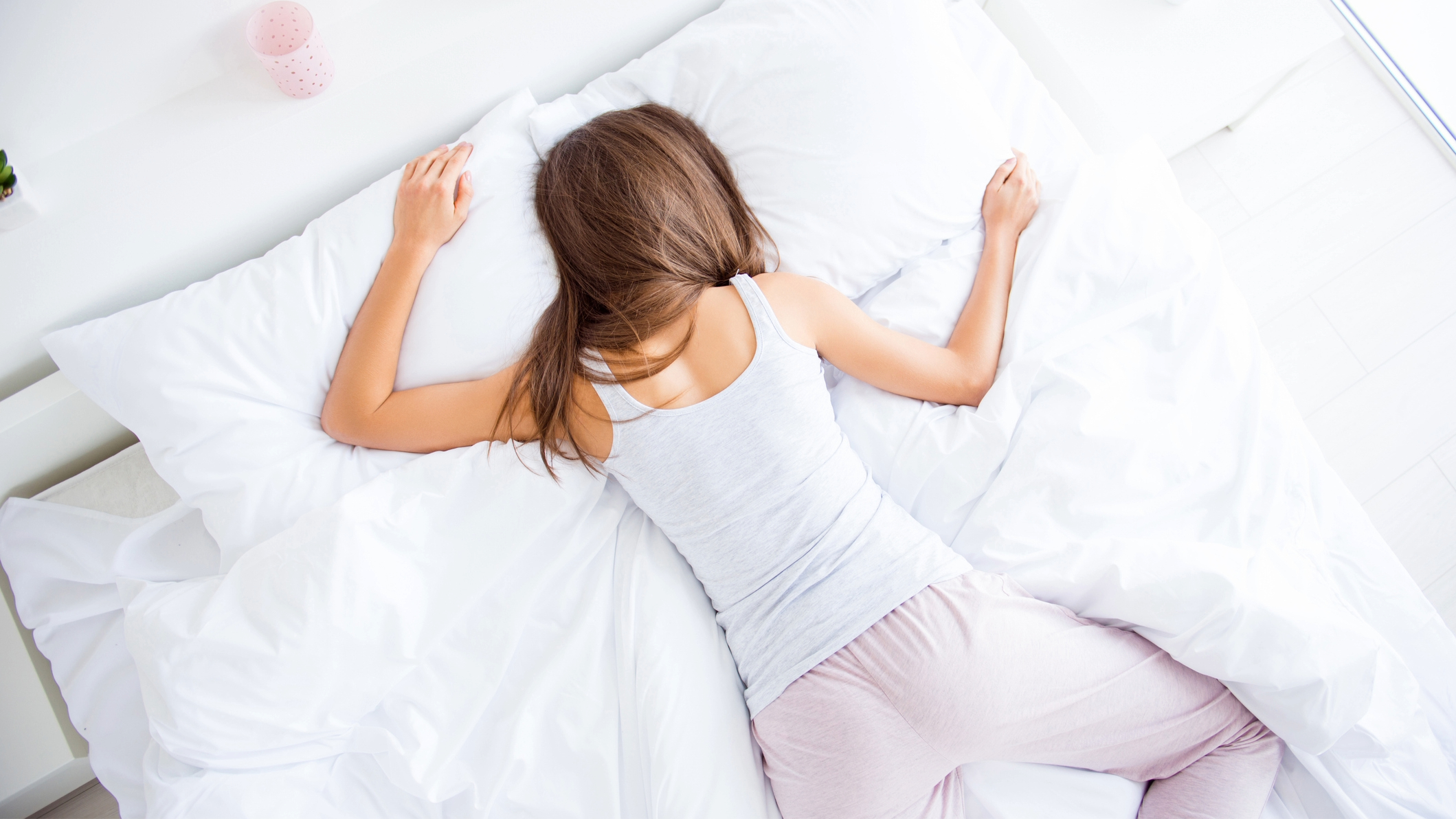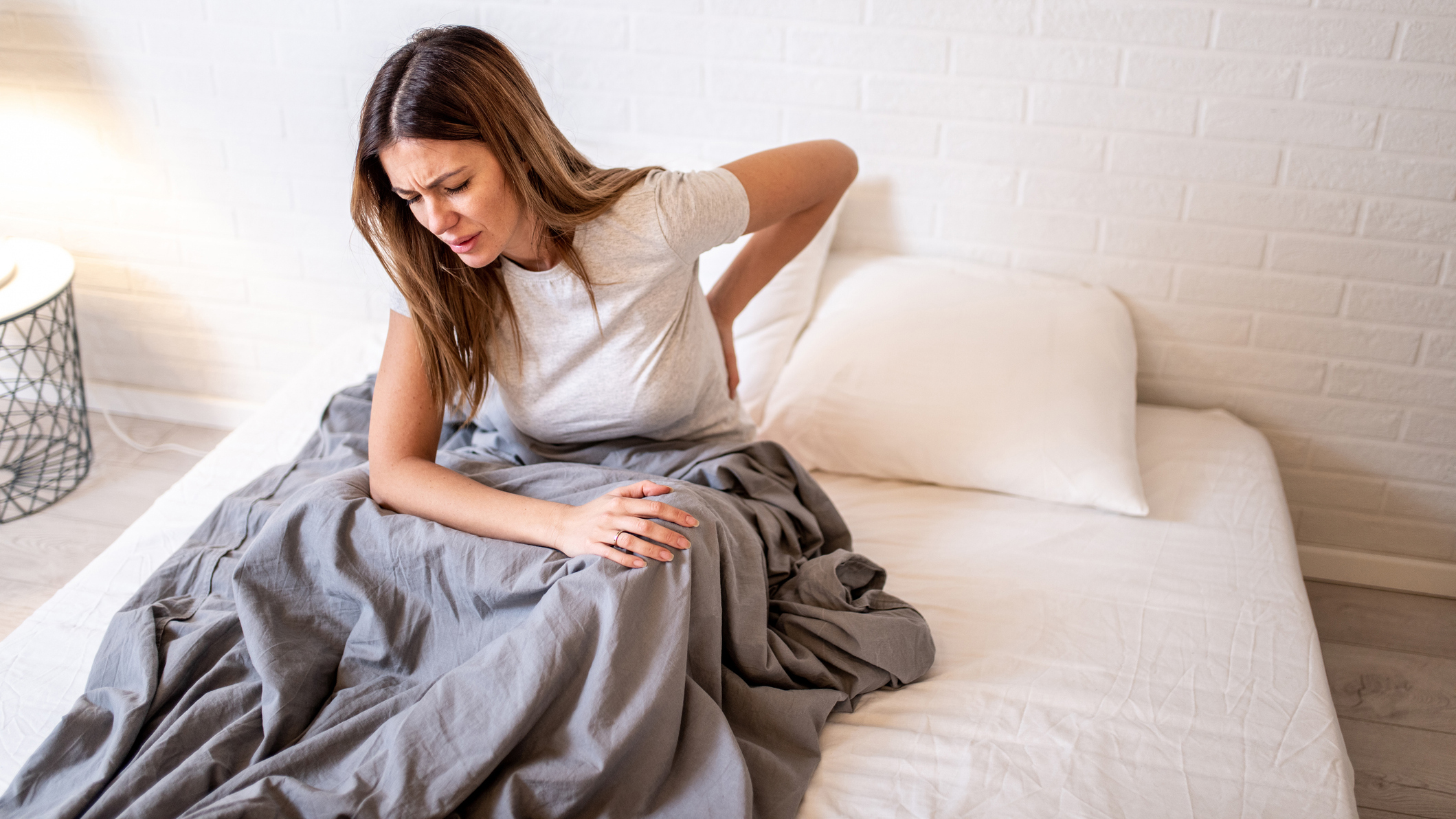5 things to expect when sleeping on a memory foam mattress for the first time
You can expect a quieter night's sleep and fewer aches and pains when sleeping on a memory foam mattress.

The choice of mattresses is seemingly endless. From different types of foam, springs, and coils to smart, adjustable, and floor mattresses, sometimes it can feel impossible to choose. But one that you’re sure to come across while shopping is the memory foam mattress.
Many of the top picks in our best mattress of the year guide are made from memory foam, or a combination of memory foam and springs. It’s a popular material made from polyurethane that offers both support and indulgent comfort, but its distinctive feel is not for everyone.
Sometimes you can’t always try a mattress before you buy, and while many offer free returns and sleep trails, it’s important to know what to expect before you make a sizeable investment. We’re taking a look at the top 5 things to expect when sleeping on a memory foam mattress for the first time before exploring what our mattress testers make of memory foam.
What does a memory foam mattress feel like?
When sleeping on the best memory foam mattresse, you'll experience a sinking, cradling feeling. This is often referred to as a memory foam 'hug.' Rather than lying on top of the mattress, it may feel like you’re almost in the mattress. The foam will slowly contour around your body, distributing your weight evenly.
However, foam is a surprisingly versatile material, and firm memory foam mattresses do exist. Firm vs soft memory foam mattresses have a sturdier support, without the soft 'hug' feel.
You’ll also notice, as you change sleeping positions throughout the night, that the memory foam will adapt. As you take pressure off an area of the mattress, the foam will be restored to its original shape, and as you settle into a new position, the foam will start to sink under the new pressure, letting you fully relax into your next position.
Memory foam mattresses won’t feel bouncy, like spring mattresses. Instead they will feel quite dense and almost squishy. However, they can be slow to adapt to pressure, rather than a spring bed that immediately gives way.
Get instant access to breaking news, the hottest reviews, great deals and helpful tips.
Are memory foam mattresses soft or firm?
In general, memory foam mattresses have a soft feel, which make them a great option for side sleepers. This is because the mattress will sink beneath key pressure points, like the shoulders and hips, taking pressure off them and helping align the spine.
Despite being known as a softer material, some memory foam mattresses are available in varying firmness levels. A firmer memory foam mattress won’t sink as deep, offering more support and making it more suitable for back and stomach sleepers. Our guide to the Nectar Premier vs Plank Firm memory foam mattresses demonstrates the variety of this material.
However, most of the top picks for our 2025 best firm mattress guide are hybrid mattresses, rather than full foam, combining memory foam with springs to make a firmer, more supportive, surface.

5 things to expect when first sleeping on a memory foam mattress
1. Unlikely to be woken up by a fidgety partner
Because of the dense, adaptable surface, motion does not transfer easily across the mattress, like it would for a spring or hybrid mattress, resulting in excellent motion isolation.
This means that you’re unlikely to be disturbed when sharing a bed with a fidgety partner or have different sleep schedules. Ultimately, this is likely to lead to a more restful night’s sleep, making disturbances in the night less frequent.
2. A quieter night’s sleep
Some spring mattresses can squeak and creak every time you move, and this only gets worse the longer you have them. This constant sound can be disturbing and stop you from sleeping soundly, especially if you share a bed with a wriggler.
Memory foam is virtually silent in comparison. The lack of springs and coils mean you’ll barely hear a sound when you’re tossing and turning, helping contribute to a peaceful environment.
3. Fewer aches and pains
Because of the way memory foam evenly distributes your weight, you can avoid pressure build up on specific joints and muscles. This can relieve any aches and pains you experience, and has even been proven to reduce chronic back pain in the long term.
Many people describe this cradling sensation as feeling like a hug. Some people find comfort in this, others may feel stuck or uncomfortable, so it’s important to determine your preferences.

4. You may feel a little warmer
Foam mattresses are known for sleeping hotter than hybrid or spring mattresses, mainly because the material absorbs your body heat and the structure doesn’t allow for much airflow or heat distribution.
However, now many memory foam mattresses offer cooling options, like cooling covers or cooling gel memory foam, that can help draw heat away from the body and make temperature regulation easier.
5. Less sneezing and coughing
A little known benefit of memory foam is that its structure is impenetrable to dust mites. Also, because of this dense structure, humid areas are unlikely to build up like they do around coils and springs that then act like breeding grounds for dust mites.
This means if you’re sensitive to allergens, you’ll likely experience less irritation on a memory foam mattress, and therefore enjoy a higher quality of sleep.

Who is a memory foam mattress best for?
Memory foam mattresses are best for those who:
- Share a bed with a restless partner
- Want relief from aches and pains
- Require a hypoallergenic mattress
- Enjoy a soft to medium-firm feel
- Enjoy a cradling, hugging sensation at night
Who should avoid a memory foam mattress?
It may be best to avoid memory foam mattresses if:
- You or your partner sleep very hot
- You’re a stomach sleeper
- You have a heavier than average body weight that needs more support
- You enjoy a bouncy, responsive bed
What our mattress testers think of memory foam mattresses

Our team of expert mattress testers have tried a huge variety of memory foam mattresses from multiple different brands. Overall, they agree that the options for memory foam mattresses are now so versatile that they can suit many different types of sleepers.
Many assumptions about memory foam, like how hot it can be and the super soft, sinking nature of the material, are now almost irrelevant, thanks to the choices available, like firmness levels and cooling technology.
For example, they found that while testing the Nectar mattress in the Nectar mattress review, it was suitable for most sleeping positions, a temperature change was barely noticeable, and it had a medium-firm feel that prevented you from sinking too much. Perfect for those that don’t necessarily like the ‘hugging’ feel, but still want excellent pressure relief.

Lauren is an experienced writer and editor in the health and lifestyle industry and has led many campaigns and projects that deliver news, advice, and research on all things sleep. As the Sleep Features Editor for Tom’s Guide, Lauren writes, commissions and edits sleep and mattress content, from in-depth how-tos in sleep and mattress health to interviews with doctors and neuroscientists on the latest news in sleep. Lauren regularly tests new sleep tech and accessories to evaluate their effectiveness for getting good quality sleep and easing specific sleep struggles like nighttime anxiety. Alongside this, Lauren reports on the best mattress brands out there, like Helix, Saatva, and DreamCloud, helping readers find the right mattress for them and the best deals on them.
